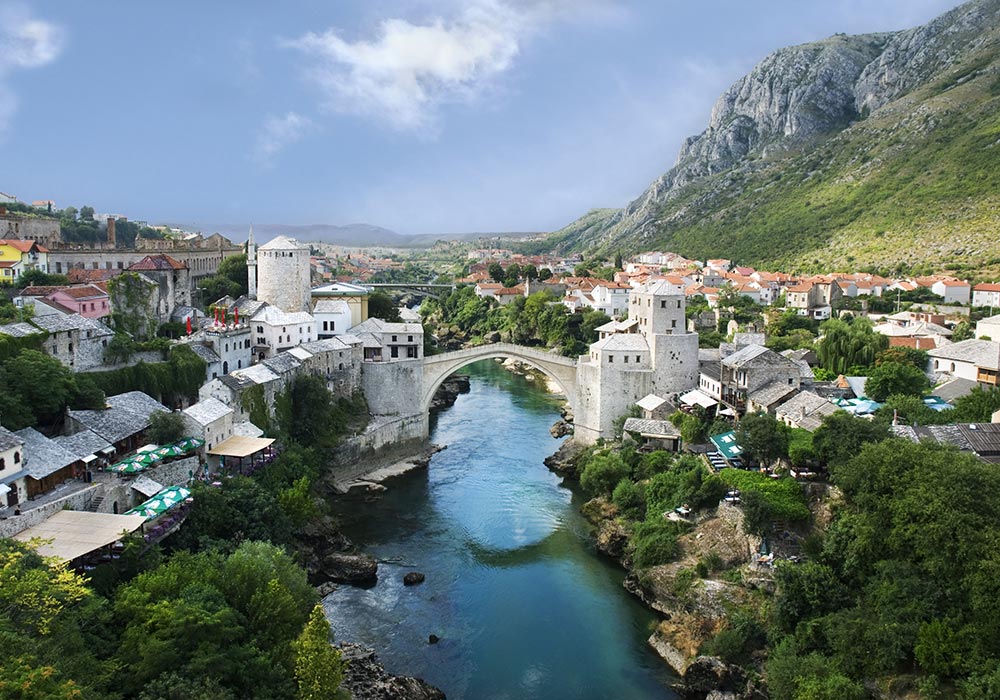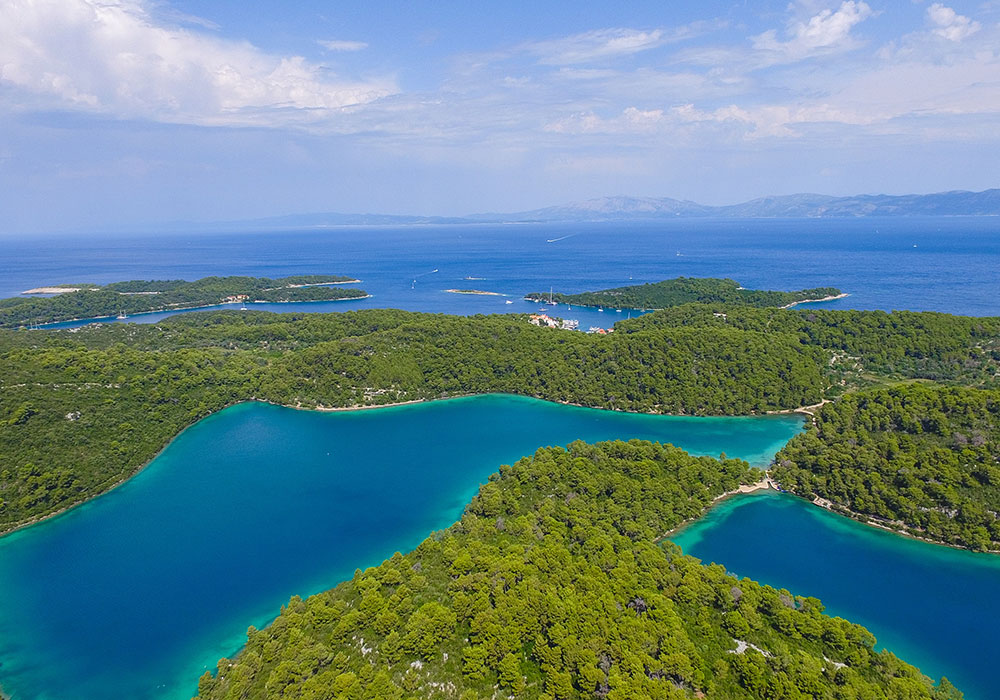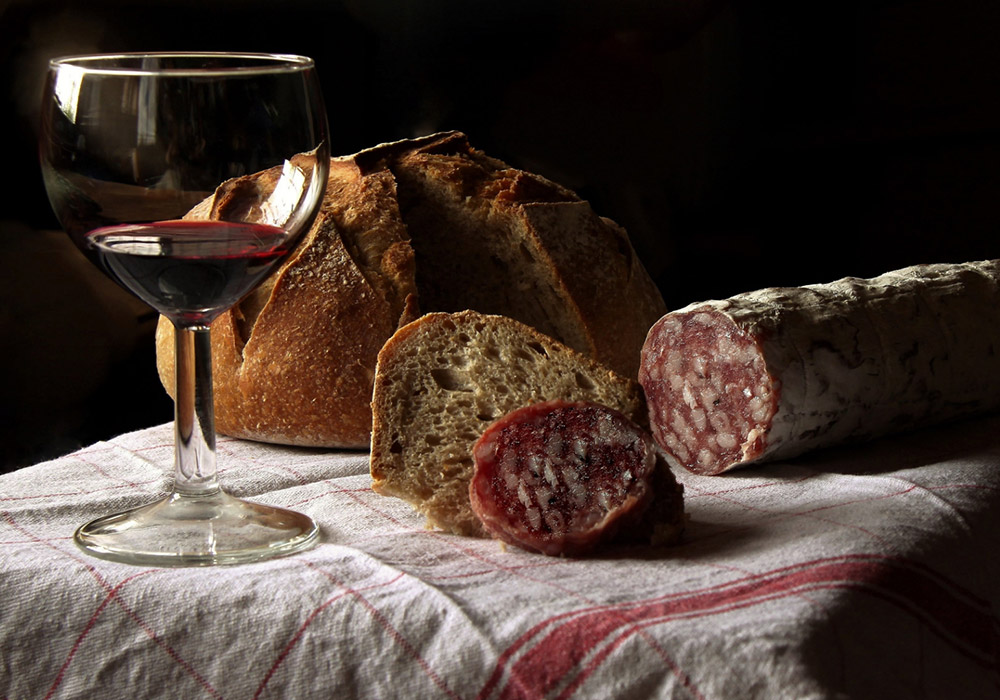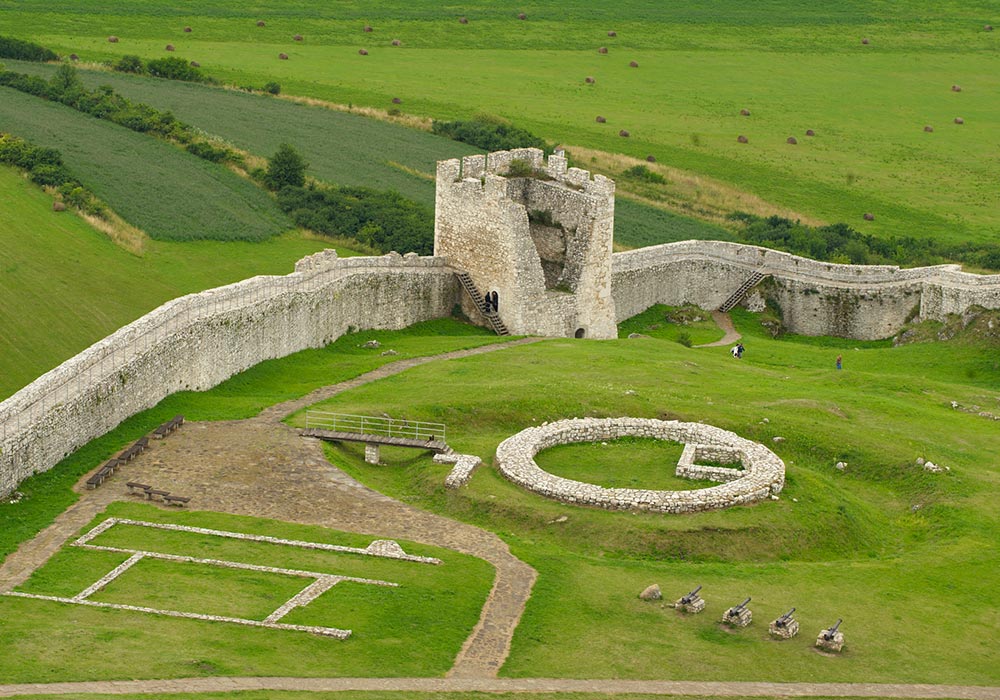This program is jointly organized with our partner, Road Scholar.
YOU WOULD NEVER HAVE IMAGINED A COUNTRY WITH SO MUCH TO SEE
Enchanting Castles and Painted Monasteries
- Information
- Tour Plan
- Location
- Gallery
- Similar Tours
What's included
- Transfer between the airport and hotels
- Meals according to the program (half board)
- In-depth sightseeing program
- All taxes and fees
- Deluxe hotels with central locations
- Deluxe air-conditioned coaches
- Professional local guides throughout the tour
- Travel expenses (land only)
- All entrance fees as per itinerary
- Departure Taxes or Visa handling fees
- Excess baggage charge
- Personal expenses
- Visa arrangements
- International flights
- Free time entrance tickets to monuments and museums
- Day 1 - Arrival in Bucharest
- Day 2 - Bucharest
- Day 3 – Peles Castle, Transfer to Brasov
- Day 4 – Bran and the city of Brasov
- Day 5 – Travel to Radauti through Bicaz Gorge, Lacu Rosu
- Day 6 – Voronet, Moldovita, Sucevita, Marginea
- Day 7 – Travel to Cluj-Napoca, Bistrita, Dracula Castle Restaurant
- Day 8 – Rimetea
- Day 9 – Cluj
- Day 10 – Program Concludes
Welcome to Bucharest
After arrival meet the group at orientation meeting and then enjoy welcome dinner.
Bucharest Sightseeing
Expert-led field trip in Bucharest including the Parliament (the second largest building in the world that was designed to be the office of the former dictator), and the Hill of Patriarchy (the center of the Romanian Orthodox Church).
Lunch at a downtown restaurant, Caru cu Bere, once a meeting point for writers and politicians.
Visit the historic center of the city including the archaeological remains of the court of Vlad the Impaler. Later, continue with your Group Leader for an excursion of the open air village museum. (If you wish to return to the hotel instead, you may return with the coach.)
Explore the many charming eating places yourself for dinner.
See where the Romanian king used to live
Travel to Transylvania to our next destination, Brasov. We stop in Sinaia and enjoy an expert-led excursion through Peles Castle - summer residence of the Royal Family. The castle was built according to Western-European fashion by using the best possible materials: Murano crystal chandeliers, German stained-glass windows, Cordoba leather wall coverings, Meissen and Sevres porcelain. Many people believe this to be the most beautiful castle in Europe.
Lunch in Sinaia.
Arrival in Brasov, a nicely preserved Saxon (German) city with the largest Gothic cathedral in the region. Its former German community is the birth place of Transylvanian Protestantism. Later in the evening, attend a lecture: "History of Romania."
Dinner at the hotel dining room.
Castle of Dracula
Enjoy a walk in the historic center of Brasov. Brasov is one of the most picturesque historic cities of Romania. Established by Saxon (German) settlers at a strategic crossroad of trade routes in the 12th century, it was the gate of the Hungarian kingdom towards the southeast. Surrounded by high mountains, one can always enjoy the clean air and the nice streets, squares, towers, and churches. One of the highlights is the Black Church, the largest Gothic structure of Eastern Europe.
Lunch in the historic center.
Bus excursion to Bran, known as the Castle of Dracula. The castle was originally built in the 14th century by the citizens of Brasov to protect their trade routes. Later it was owned by Hungarian kings, and the Romanian royal family. We will get acquainted with the myths of Dracula.
Dinner at the hotel dining room.
Let’s cross the Carpathians
Travel from Brasov (Transylvania) to Radauti (Romania). Cross the magnificent Bicaz Gorge and stop at Lacu Rosu (Killer Lake) along the way.
Lunch at a local restaurant at Lacu Rosu.
Arrive at the hotel in Radauti.
Dinner at the hotel dining room.
World Heritage Painted Monasteries
All day excursion to the famous painted monasteries including those listed as World Heritage sites. Learn about the history and architecture of the monasteries and study the iconography and specific meaning of the wall paintings. The morning includes excursions at Voronet and Moldovita Monasteries. As we cross a picturesque mountain en route to Sucevita, admire great views and observe Ukrainian farms.
Lunch at a local restaurant.
Field trip to the Sucevita Monastery and religious museum. Continue to a famous black pottery workshop in Marginea and observe how the pots are made.
Dinner at the hotel dining room.
Enjoy the scenic ride through Transylvania
Return to Transylvania, to Cluj-Napoca - the educational and cultural center of the region. Enjoy a coffee stop at the Dracula Castle Restaurant, Hanul Tihuta.
Lunch at a local restaurant in Bistrita, a formal Saxon town.
Take a walk in the town of Bistrita, before arriving in Cluj-Napoca. Settle into your hotel.
Explore local fare on your own for dinner.
Meeting locals
All day excursion to Rimetea, a historic village awarded the Europa Nostra Medal in 1999. We first visit the five hundred year-old Salt Mine at Turda. Continue to Rimetea, a village with a stunning natural and architectural heritage.
Visit a local family in Rimetea, where we eat local meals and taste the famous wines of the Aiud wine region.
Continue our excursion in Rimetea. We visit the local museum to learn about folk traditions, local costumes, embroidery, and the local iron mining and manufacturing.
We enjoy a dinner arranged by the Teodidactos Foundation, during which you can meet locals and discuss any questions you might have.
Capital of Transylvania
This morning, enjoy a lecture on "Sociology, Romania Today." Then take an expert-led sightseeing excursion in Cluj. We will travel by foot to see Cluj’s magnificent landmarks. Explore the two historical city centers, admire the Gothic Franciscan Monastery, the birth house of King Mathias, and the baroque Bánffy Palace. We will end the walking excursion on the picturesque Wolf Street, where we will view former palaces, a great heraldry collection in the protestant church, and one of the Medieval bastions of the walled city.
Lunch at a local restaurant.
Enjoy some free time in Cluj.
Farewell dinner with traditional food in Savadisla.
Farewell
Transfer to the airport for your flight.
More about Central Europe
At once natural and refined, folksy and cultured: the combination of mountain rusticity with old-world style captivates in Central Europe.
Teutonic half-timbered villages, graffiti-decorated Renaissance squares, medieval walled towns…. Wander the darkly Gothic alleyways of Prague, admire the baroque excess of Salzburg or take in the colourful old-Venetian influence on the Slovenian port of Piran. Poland and the Czech Republic seem to have more than their fair share of medieval masterpieces, but you can find narrow lanes and quaint townscapes throughout the region – from Bern, Switzerland to Bardejov, Slovakia. Smaller gems such as Bamberg, Germany are often far from the tourist radar. On mornings when the mists lie heavy and crowds are few, you might imagine yourself in an earlier century.
Nourishing yourself is more fun in a great atmosphere, and Central Europe's abundance of outdoor cafes, beer halls and coffee houses offer just that. When the temperatures rise in spring, outdoor tables proliferate along with the daffodils and tulips. Enjoy a plate of pasta while admiring the Slovenian coast, nosh pierogi (dumplings) on a Polish cobblestone street or dip into fondue lakeside in Switzerland. Beer gardens across the region offer an opportunity to enjoy hearty food, a convivial atmosphere and a good brew alfresco. Once the weather cools, move inside to a boisterous beer hall. Or, for something a little sweeter, try a cake at a coffee house or pastry cafe. The most famous are in Vienna and Budapest, but you'll find many options – and other interesting places to eat and drink – all across the region.
With mountains covering so many Central European states, it's no wonder that the outdoors holds such an attraction in the region. The Alps rise to their highest in Switzerland, with jagged, Toblerone-like peaks such as the Matterhorn, and march on through southern Germany, across Austria and south into Slovenia. You can hike, bike, ski or just ride the gondolas and funiculars to enjoy the Alpine views. Other mountains, like the Swiss Jura and the Polish–Slovak Tatras, offer no less adventure. There are also sculptural sandstone 'rock towns' in the Czech Republic to climb, waterfall-filled gorges in Slovakia and Slovenia to hike and the bucolic Black Forest in Germany to walk. There's a new part of nature to explore almost around every corner.
More about Romania
The largest of the Balkan countries, Romania has dramatic mountain scenery and a coastline on the Black Sea. It has seen numerous empires come and go from the Roman and Ottoman to the Austro-Hungarian. After World War II the country fell under Communist rule, although the leadership pursued a foreign policy independent of that of the Soviet Union. The legacy of Communist leader Nicolae Ceausescu lingered long after the uprising which brought about his downfall on Christmas Day 1989. A slower developer than other former communist countries of eastern Europe, Romania took a major step away from its past when it was one of seven countries to join Nato in late March 2004. In April 2005 Bucharest signed an EU accession treaty, paving the way for Romania eventually to join the union in January 2007.
Romania is a land of diversity. With its vibrant multi cultural and multi etnic population, rich and disappearing folk traditions setted in a breathtakingly beautiful landscape. By travelling there, you will understand how the Saxons (Germans), Hungarians, Romanians, Gypsies, Jewish people and many other groups lived together here over the centuries. You will also encounter the difference between the traditions of religious groups(Roman Catholics, Greek Catholics, Orthodox, Jewish, Unitarians – which religion actually originate from Romania, Calvinists and the Lutherans) since Transylvania was one of the first place where religious freedom was declared. Romania can offer you endless choices from its vibrant capital Bucharest, gorgeous mountains of the Carpathians, the remote areas of Maramures, the rich Saxon towns of Sighisoara, Brasov, Sibiu, the architectural treasures of Transylvania to the painted monasteries of Bucovina.
More about Transylvania
Transylvania is a historical region which is located in central Romania. Bound on the east and south by its natural borders, the Carpathian mountain range, historical Transylvania extended westward to the Apuseni Mountains.
The Anglosphere commonly associates Transylvania with vampires, thanks to the dominant influence of Bram Stoker's novel Dracula and the many films the tale inspired.
Transylvania’s forested valleys and Gothic castles are forever embedded in the popular imagination. Even before arriving, most visitors can picture this land of dark fairy-tales, where fog drapes like cobwebs over the Carpathian Mountains.
These stirring landscapes can be explored on hikes through Piatra Craiului National Park, or the Bucegi Mountains; or can be seen frozen over at winter sports centres. Medieval fantasies move around the watchtowers and cobbled lanes of Braşov and Sighişoara or Transylvania’s castles: world-famous Bran, ornate Peleş, and Hunedoara’s Gothic apparition.
Deeper in the countryside, rural Transylvania's tapestry of cultures awaits: vibrant, secretive Roma communities, Székely Land hamlets where only Hungarian is spoken, and Saxon villages with crumbling citadels. Here, standstill traffic means horses and carts waiting patiently for herds of goats to scatter.








